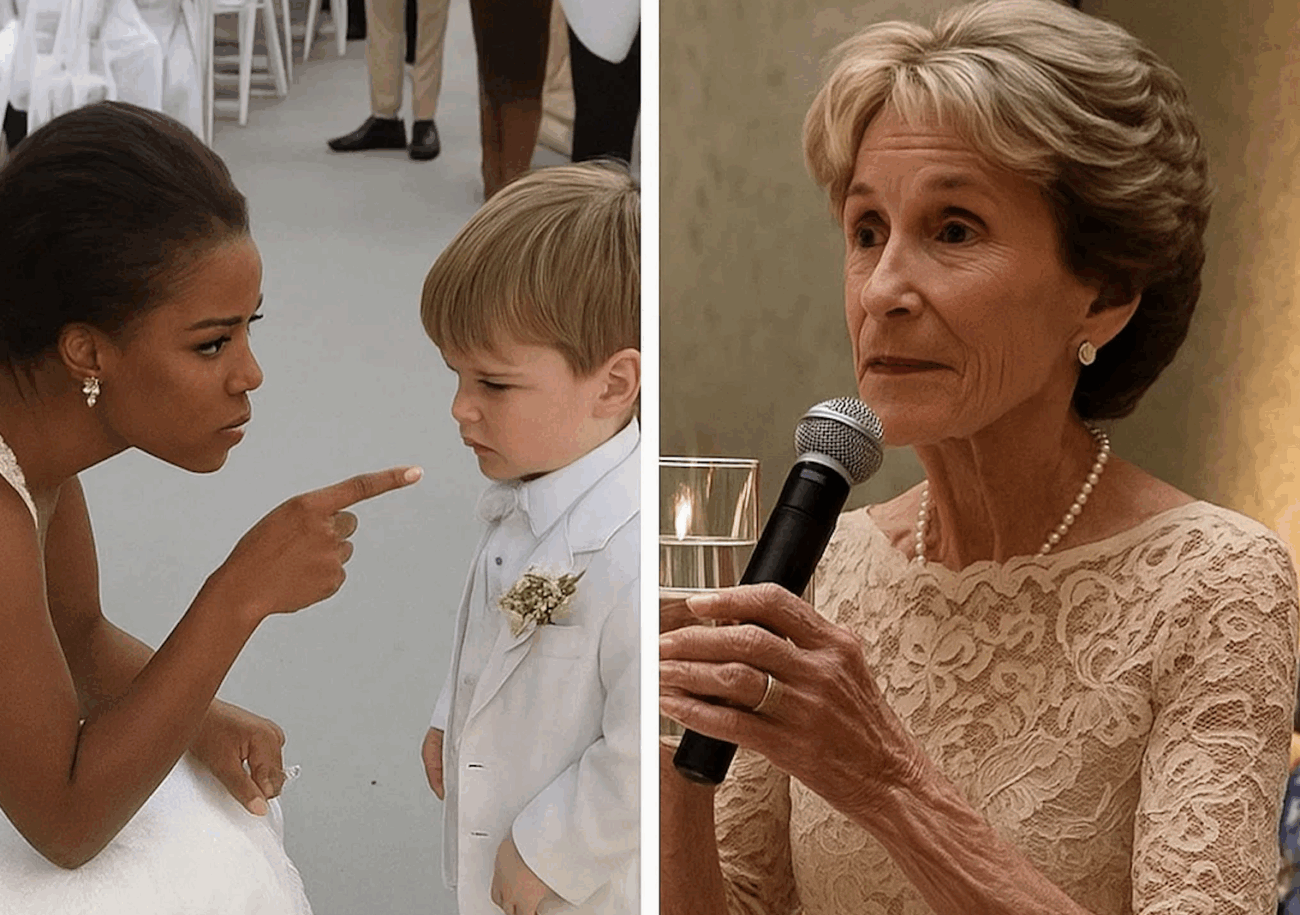Wendy made it clear that my grandson was not welcome—neither at her wedding, in her home, nor in her life. While my son accepted this, I could not. I maintained a polite demeanor, played the role of a supportive mother-in-law, and waited for the right opportunity to show everyone the reality of the woman he had married.
I recall the first time I met Wendy.
It was a brunch at a modern café, characterized by concrete walls, clattering cutlery, and dishes that looked impressive but failed to impress in taste. She arrived ten minutes late, wearing a crisp cream blazer, and did not apologize. Instead of a hug, she offered a handshake and made no inquiry about my well-being.
My son Matthew appeared captivated, leaning in to listen intently, memorizing her every word as she discussed gallery openings, houseplants, and the concept of “intentional design.” Wendy presented herself as polished, sharp, and ambitious. Yet, throughout the conversation, she never mentioned Alex, my five-year-old grandson from Matthew’s first marriage. Since his mother’s passing, Alex had been living with me, a gentle child often clutching a book or toy for comfort. Her disregard for him was troubling.
When Matthew announced their engagement, I questioned why Wendy never spent time with Alex. Matthew responded vaguely, saying she was “adjusting” and that it was “a process.” I recognized this as an early warning but did not press the issue at the time.
In the months leading to the wedding, preparations consumed our time: fittings, florists, seating arrangements—but no mention was made of Alex. He was excluded from the invitations and given no role in the ceremony.
Two weeks before the wedding, I invited Wendy to my home for tea, hoping to convey Alex’s significance to our family. She arrived impeccably dressed, composed, and unflinching. When I asked what role Alex would have at the wedding, she replied lightly, “It’s not really a kid-friendly event.”
I responded calmly, reminding her that a wedding is not a nightclub and that Alex, as Matthew’s son, deserved to be included. Wendy insisted that Alex would continue to stay with me, asserting that this arrangement was “better for everyone,” while dismissing the child’s feelings. She maintained that the day’s photos, energy, and experience should not be compromised for the sake of sentimentality involving a child she barely knew.
Matthew did not challenge her position.
On the wedding day, I dressed Alex myself, ensuring he looked sharp in a gray suit with a navy tie and a small bouquet in hand, which he wished to present to Wendy as a gesture of goodwill.
Upon arriving at the venue, Wendy immediately noticed Alex and confronted me, insisting he was not to be present. I calmly reminded her that he was Matthew’s son and thus part of the occasion. She warned that he would not be included in photographs or the reception seating. I remained composed and did not escalate the situation.
Weeks earlier, I had arranged for a second photographer, introduced as a guest, to discreetly capture moments Wendy might overlook or wish to avoid. This photographer recorded Alex interacting with Matthew, their shared laughter, and subtle signs of familial connection. The photos also captured Wendy’s discomfort and detachment when Alex approached.
After the ceremony, I allowed Alex a brief photo with his father, despite Wendy’s objections. She verbally resisted, declaring she did not want him in the photographs, but I quietly ensured one image existed, showing the bond between father and son.
During the wedding toast, I raised my glass and addressed Wendy directly, emphasizing that families come with history and children, and that marrying a man includes embracing all aspects of his life. Alex presented his flowers to Wendy, who received them reluctantly and without warmth.
Weeks later, Matthew reviewed the photographs and realized Wendy’s persistent lack of affection toward his son. This recognition contributed to the dissolution of their marriage by the end of the month.
Alex, unaffected by Wendy’s absence, continued to live with his father in a home filled with love and normal childhood joys. He embraced the simplicity and security of his father’s care, finding fulfillment in everyday activities and familial connection.
The photographs served as a record of truth, highlighting both the love that existed and the absence of it where it was expected. They demonstrated the resilience of family bonds and the importance of recognizing who truly belongs in a child’s life.




